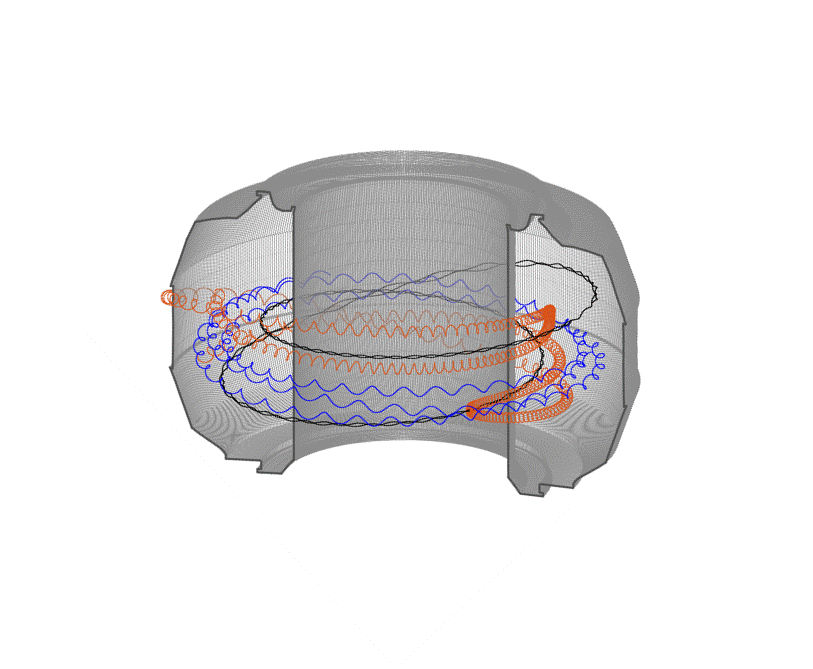
Filter News
Area of Research
- Advanced Manufacturing (5)
- Biological Systems (1)
- Biology and Environment (19)
- Clean Energy (35)
- Computational Biology (1)
- Computer Science (2)
- Electricity and Smart Grid (2)
- Functional Materials for Energy (1)
- Fusion and Fission (8)
- Fusion Energy (6)
- Isotopes (1)
- Materials (15)
- Materials for Computing (2)
- National Security (3)
- Neutron Science (4)
- Nuclear Science and Technology (3)
- Quantum information Science (1)
- Sensors and Controls (1)
- Supercomputing (8)
News Type
News Topics
- (-) Bioenergy (22)
- (-) Biomedical (15)
- (-) Composites (13)
- (-) Fusion (17)
- (-) Grid (25)
- (-) Mercury (3)
- 3-D Printing/Advanced Manufacturing (50)
- Advanced Reactors (18)
- Artificial Intelligence (21)
- Big Data (21)
- Biology (25)
- Biotechnology (3)
- Buildings (25)
- Chemical Sciences (25)
- Clean Water (13)
- Climate Change (29)
- Computer Science (57)
- Coronavirus (15)
- Critical Materials (13)
- Cybersecurity (9)
- Decarbonization (13)
- Energy Storage (48)
- Environment (59)
- Exascale Computing (4)
- Fossil Energy (1)
- Frontier (4)
- High-Performance Computing (23)
- Hydropower (6)
- Irradiation (3)
- Isotopes (15)
- ITER (4)
- Machine Learning (13)
- Materials (68)
- Materials Science (54)
- Mathematics (2)
- Microscopy (20)
- Molten Salt (6)
- Nanotechnology (24)
- National Security (11)
- Net Zero (3)
- Neutron Science (41)
- Nuclear Energy (36)
- Partnerships (8)
- Physics (10)
- Polymers (14)
- Quantum Computing (6)
- Quantum Science (14)
- Security (4)
- Simulation (12)
- Software (1)
- Space Exploration (11)
- Statistics (1)
- Summit (8)
- Sustainable Energy (56)
- Transformational Challenge Reactor (1)
- Transportation (47)
Media Contacts

As the rise of antibiotic-resistant bacteria known as superbugs threatens public health, Oak Ridge National Laboratory’s Shuo Qian and Veerendra Sharma from the Bhaba Atomic Research Centre in India are using neutron scattering to study how an antibacterial peptide interacts with and fights harmful bacteria.

Gleaning valuable data from social platforms such as Twitter—particularly to map out critical location information during emergencies— has become more effective and efficient thanks to Oak Ridge National Laboratory.

Scientists have tested a novel heat-shielding graphite foam, originally created at Oak Ridge National Laboratory, at Germany’s Wendelstein 7-X stellarator with promising results for use in plasma-facing components of fusion reactors.
![2018-P07635 BL-6 user - Univ of Guelph-6004R_sm[2].jpg 2018-P07635 BL-6 user - Univ of Guelph-6004R_sm[2].jpg](/sites/default/files/styles/list_page_thumbnail/public/2018-P07635%20BL-6%20user%20-%20Univ%20of%20Guelph-6004R_sm%5B2%5D.jpg?itok=DUdZNt_q)
A team of scientists, led by University of Guelph professor John Dutcher, are using neutrons at ORNL’s Spallation Neutron Source to unlock the secrets of natural nanoparticles that could be used to improve medicines.

Oak Ridge National Laboratory scientists have devised a method to control the heating and cooling systems of a large network of buildings for power grid stability—all while ensuring the comfort of occupants.

Biologists from Oak Ridge National Laboratory and the Smithsonian Environmental Research Center have confirmed that microorganisms called methanogens can transform mercury into the neurotoxin methylmercury with varying efficiency across species.

Fusion scientists from Oak Ridge National Laboratory are studying the behavior of high-energy electrons when the plasma that generates nuclear fusion energy suddenly cools during a magnetic disruption. Fusion energy is created when hydrogen isotopes are heated to millions of degrees...

A novel method developed at Oak Ridge National Laboratory creates supertough renewable plastic with improved manufacturability. Working with polylactic acid, a biobased plastic often used in packaging, textiles, biomedical implants and 3D printing, the research team added tiny amo...

A new manufacturing method created by Oak Ridge National Laboratory and Rice University combines 3D printing with traditional casting to produce damage-tolerant components composed of multiple materials. Composite components made by pouring an aluminum alloy over a printed steel lattice showed an order of magnitude greater damage tolerance than aluminum alone.

An Oak Ridge National Laboratory study is providing an unprecedented watershed-scale understanding of mercury in soils and sediments. Researchers focused on evaluating mercury and soil properties along the banks of a mercury-contaminated stream in Oak Ridge, Tenn., sampling 145 loca...


